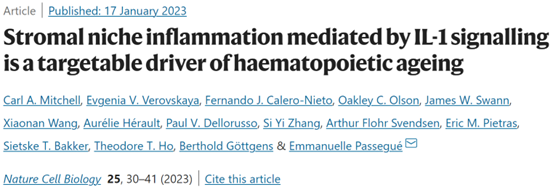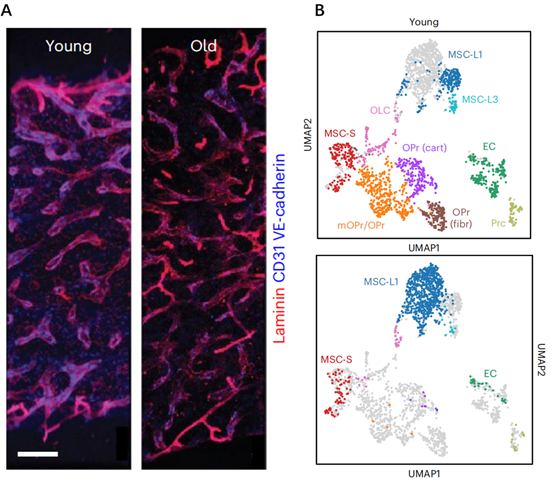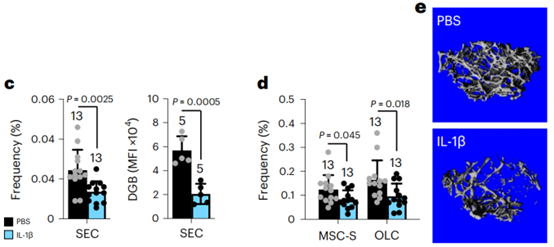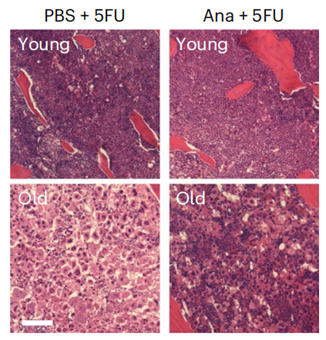How to rejuvenate the hematopoietic system without blood transfusion?
- Normal Liver Cells Found to Promote Cancer Metastasis to the Liver
- Nearly 80% Complete Remission: Breakthrough in ADC Anti-Tumor Treatment
- Vaccination Against Common Diseases May Prevent Dementia!
- New Alzheimer’s Disease (AD) Diagnosis and Staging Criteria
- Breakthrough in Alzheimer’s Disease: New Nasal Spray Halts Cognitive Decline by Targeting Toxic Protein
- Can the Tap Water at the Paris Olympics be Drunk Directly?
How to rejuvenate the hematopoietic system without blood transfusion?
- Should China be held legally responsible for the US’s $18 trillion COVID losses?
- CT Radiation Exposure Linked to Blood Cancer in Children and Adolescents
- FDA has mandated a top-level black box warning for all marketed CAR-T therapies
- Can people with high blood pressure eat peanuts?
- What is the difference between dopamine and dobutamine?
- How long can the patient live after heart stent surgery?
How to rejuvenate the hematopoietic system without blood transfusion?
Scientists have discovered that the inflammatory response in the bone marrow microenvironment leads to the decline of hematopoietic stem cell function, and blocking IL-1 signaling can restore hematopoietic function
It is no longer a science fiction story to exchange blood to reverse aging. In mouse experiments, scientists have found that injecting young blood into the bodies of old mice can make the aging heart beat harder, the muscles become stronger, and the thinking becomes sharper [1,2].
But having said that, exchanging blood is easy to say, and the threshold for really realizing it is indeed a bit high. In addition to potential risks such as infection, the anti-aging effect of blood transfusion on humans needs to be further explored and considered. Therefore, many scientists turn to decipher the code of immortality in young blood.
Or, we can simply change our thinking. For example, if you want to bring a piece of wasteland back to life, it will not work just by constantly replacing the turf. We might as well turn over the grass and rebuild the ecology.
Recently, an article published in a sub-journal of “Nature” successfully reversed the decline of hematopoietic function by modifying the bone marrow microenvironment without transfusion [2].
Emmanuelle Passegué of Columbia University and her colleagues found that with age, the bone marrow microenvironment in which hematopoietic stem cells live changes structurally and is full of inflammatory responses, leading to age-related functional changes in hematopoietic stem cells.
Treatment with a rheumatoid arthritis drug that blocks a signaling pathway mediated by the inflammatory factor IL-1 significantly restored mouse blood stem cells to a younger, healthier state .

Screenshot of paper homepage
Over time, hematopoietic stem cells age, produce fewer red blood cells, produce fewer immune cells, and struggle to maintain their own genomic integrity, leading to anemia, impaired adaptive immunity, and leukemia.
Passegué and her team have tried various methods to rejuvenate blood stem cells, such as exercising mice and putting them on a calorie-restricted diet. .
Therefore, Passegué and others will aim at the “working environment” of hematopoietic stem cells-bone marrow.
In addition to hematopoietic stem cells, bone marrow mesenchymal stem cells, endothelial cells, adipocytes, macrophages and other types of cells live in the bone marrow microenvironment. These cells and the cytokines they secrete play a vital role in regulating the self-renewal, differentiation, and regeneration functions of hematopoietic stem cells. This time, Emmanuelle Passegué and others tried to restore the working state of hematopoietic stem cells when they were young by modifying the bone marrow microenvironment.
By comparing the bone marrow cavity of young and aged mice, the researchers found that the structure of the bone marrow microenvironment in aged mice was remodeled, the number of cells such as endosteal mesenchymal stem cells was lost, and their functions degenerated, and the inflammatory signaling pathways in the cells were activated. The cells are hypercellular and the integrity of blood vessels is compromised .
That is, as we age, the home of hematopoietic stem cells deteriorates and becomes “overwhelmed” by the inflammatory response.

A: Young vs old vessels
B: Changes in the number of various types of cells in the aging bone marrow microenvironment
So, is the functional aging of hematopoietic stem cells associated with the deterioration of the bone marrow microenvironment?
The differentiation diversity of hematopoietic stem cells is crucial for the maintenance of peripheral blood homeostasis and function. However, existing studies have shown that the differentiation of hematopoietic stem cells in the elderly has undergone significant changes, and at the expense of lymphocytes such as B cells and T cells, they tend to differentiate into myeloid cells such as macrophages and neutrophils. This phenomenon, termed emergency myelopoiesis, is associated with elevated levels of systemic inflammation in older individuals, as well as anemia and a weakened adaptive immune response [4].
In mouse experiments, the researchers also observed emergent myelopoiesis in aged mice. Subsequently, a series of research results showed that it was the increase in the level of the pro-inflammatory factor IL-1 in the bone marrow that drove the age-related functional changes of hematopoietic stem cells such as emergency myelopoiesis . If young mice are injected with IL-1 every day for 20 days, it can be observed that the hematopoietic system and bone marrow microenvironment of young mice also show the characteristics of aging such as urgent bone marrow production and decreased number of vascular endothelial cells.

C, D: After injection of IL-1, endothelial cells and osteoclast-like cells in mice decreased
E: After injection of IL-1, the structure of trabecular bone in mice was changed
Therefore, the researchers tried to reverse the aging of hematopoietic stem cells by blocking the IL-1 signaling pathway in the bone marrow microenvironment.
The results showed that, compared with aged mice with normal expression of IL-1 receptor, aged mice knocked out of IL-1 receptor by genetic means showed a younger bone marrow microenvironment, and the number of various types of cells Balance is restored, inflammatory signals are reduced, and metabolism is normalized .
If drug treatment is adopted, injecting the human IL-1 receptor antagonist Anakinra (Anakinra, a rheumatoid arthritis drug) into mice every day for 14 consecutive days can also make the hematopoietic stem cells of aged mice “Rejuvenation”, the hematopoietic function is significantly restored to the state of youth.

Anakinra Therapeutic Effects
Overall, Emmanuelle Passegué and her colleagues found that with age, an increased inflammatory response in the bone marrow microenvironment leads to aging of the hematopoietic system.
Treatment with the drug Anakinra can help “age down” the hematopoietic stem cells of old mice .
Blood is a transportation line that runs through the body, delivering nutrients to organs and tissues throughout the body.
According to Emmanuelle Passegué, imagine that for a 70-year-old person, if his hematopoietic system is only 40 years old, he can have a longer, if not longer overall lifespan [1].
references:
[1] https://www.cuimc.columbia.edu/news/will-revitalizing-old-blood-slow-aging
[2] Ambrosi, TH, Chan, CKF A seed-and-soil theory for blood aging. Nat Cell Biol 25, 9–11 (2023). https://doi.org/10.1038/s41556-022-01062-z
[3] https://www.nature.com/articles/s41556-022-01053-0#citeas
[4]Beerman, I. et al. Proc. Natl Acad. Sci. USA 107, 5465–5470 (2010)
How to rejuvenate the hematopoietic system without blood transfusion?
(source:internet, reference only)
Disclaimer of medicaltrend.org
Important Note: The information provided is for informational purposes only and should not be considered as medical advice.



